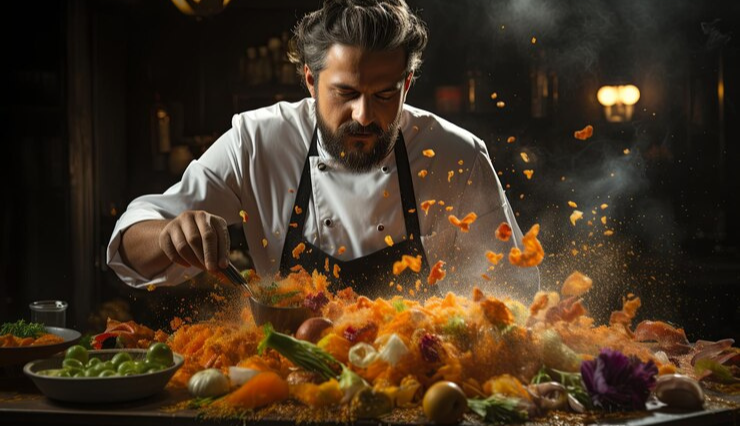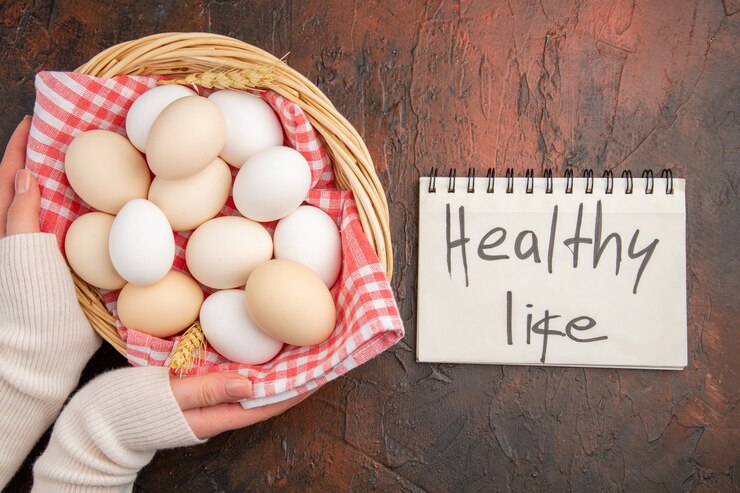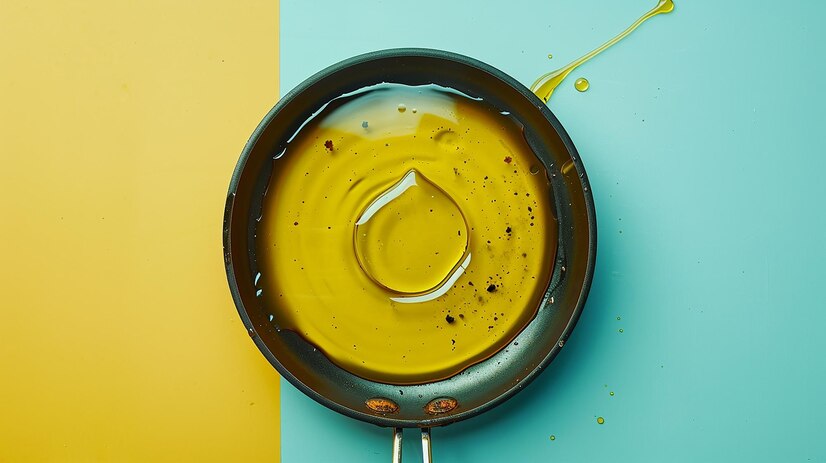In the culinary field, the appearance of a dish is just as important as its flavor. The idea of a Chef’s palette includes not just the colors and textures of the dish but also the feelings they inspire. Picture yourself entering a restaurant and being spellbound by a beautifully arranged dish—bright hues, detailed textures, and a creative arrangement that ignites both your hunger and creativity.
A beautifully arranged meal can bring up feelings from the past to anticipation, creating the perfect atmosphere for a memorable dining occasion. In this blog post, we will examine how chefs use their Chef’s palette – a mix of colors, textures, and emotional ties – to craft visually striking and meaningful dishes that capture not just the taste buds but also the emotions.
The Importance of Visual Appeal in Culinary Arts
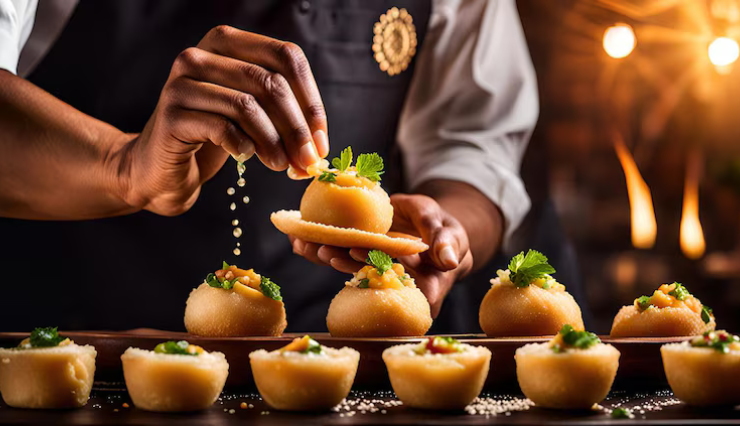
First Impressions
When a dish is brought to the table, it immediately conveys a message. Research indicates that the attractiveness of food presentation can greatly improve the dining experience as a whole. Dr. Charles Spence, a well-known food psychologist, stresses that the visual appearance of food has the ability to change how we perceive its taste, causing us to appreciate a meal more if it is presented attractively. This emphasizes the importance of the Chef’s palette of color choices in determining the mood of a dish. A beautiful display entices customers to enjoy their food, making each bite more pleasurable and elevating the culinary creation’s overall impact.
Psychological Impact
Colors and how things are displayed have a strong impact on psychology. For example, bright reds can boost hunger and raise heart rates, while calm blues usually reduce appetite. Cooks utilize this understanding in their Chef’s palette to elevate their dishes, taking into account the impact of colors on our emotions and flavor perceptions. The proper display can create a thrilling atmosphere prior to the initial taste, turning the dining experience into a captivating event that engages the eater’s senses.
Artistry in Plating
Chefs are frequently seen as artists, using their plates as canvases. The skill required for presenting dishes is a crucial aspect of the culinary profession. Methods like layering, achieving elevation, and incorporating negative space can transform the way a dish is presented, turning it into a work of art that captivates diners and sets the scene for the meal to come. Every component in the Chef’s palette of selection enhances the dining experience by ensuring that the appearance of the food matches its taste.
The Role of Colors in a Chef’s Palette
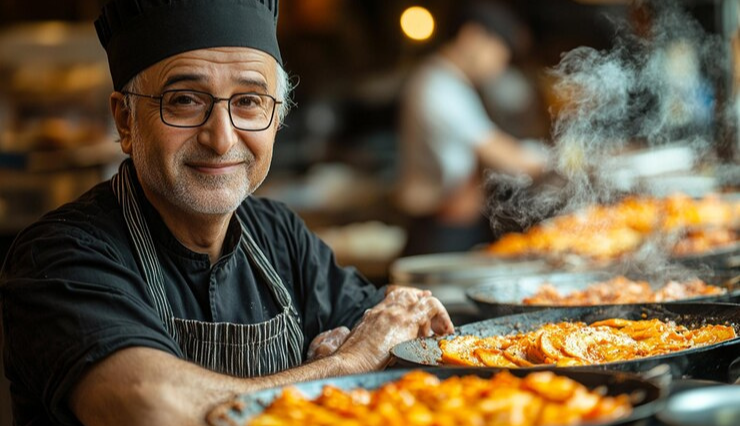
Color Psychology
Various colors elicit distinct emotions and responses. Warm colors such as orange and yellow are connected to feelings of happiness and positivity, whereas the color green is commonly associated with well-being and vitality. Chefs use this information in their specialized chef’s palette to create dishes that not only taste delicious but also evoke positive emotions. Chefs can elevate the desirability of a dish and captivate diners on a more profound level by carefully selecting color palettes.
Color Harmony
Color coordination is an essential aspect when it comes to culinary display. Chefs aim to achieve a visually appealing balance of colors by incorporating both complementary and contrasting colors to present a visually appealing display of food. An example is a meal with grilled salmon, fresh green asparagus, and a splash of orange sauce that achieves a pleasing balance for taste and appearance, demonstrating the Chef’s palette skillful use of flavors. This method of working together can turn basic ingredients into exceptional culinary journeys.
Case Studies
Well-known meals such as Gaggan Anand’s “The Green Curry,” showcasing bright green curry with colorful accompaniments, demonstrate the impactful utilization of color in cooking. In the same way, Massimo Bottura’s “Five Ages of Parmigiano Reggiano” displays various textures and colors that narrate the tale of cheese and its diverse variations, enthralling diners from the beginning. Another famous dish is Thomas Keller’s iconic “Oysters and Pearls,” which showcases the Chef’s palette ability to make visually stunning creations by combining delicate tapioca pearls with fresh oysters.
The Texture Dimension
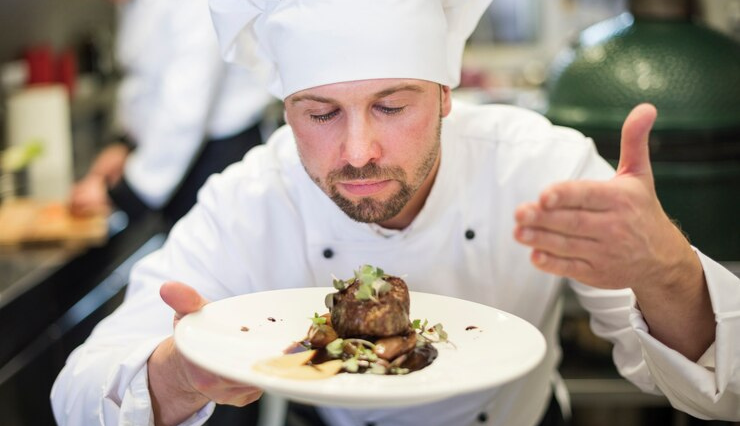
Importance of Texture
Texture is crucial in culinary experiences, enhancing the intricacy of dishes. Cooks utilize different textures such as crunchy, creamy, and chewy to craft a diverse dining sensation. Every bite has the ability to elicit a unique feeling, enhancing the overall pleasure of the meal. Giving careful thought to the texture is crucial for chefs, and for their chef’s palette as it enables them to create visually appealing dishes that also offer a pleasing taste experience.
Balancing Textures
Mastering the skill of mixing textures is essential for keeping a meal engaging. Cooks frequently mix different textures, like combining smooth risotto with crispy roasted nuts, to make an exciting sensation that maintains interest on the taste buds. This difference doesn’t just make the taste better, it also encourages diners to delve deeper into the dish, underscoring the significance of texture in the Chef’s palette culinary creations.
Sensory Experience
The texture of a meal plays a significant role in shaping the dining experience. For instance, a meal with a crunchy exterior and a soft inside stimulates various senses, increasing satisfaction. Chefs know that combining different textures can turn a regular meal into an exceptional experience, making dining a multi-sensory occasion that showcases a skilled Chef’s palette.
Evoking Emotions Through Food
Emotional Connection
Food has a special power to bring out feelings and recollections. Chefs frequently craft meals that evoke memories for customers, such as a beloved family recipe or a treasured childhood dish. Through a thoughtful blend of flavors, colors, and textures, diners can be taken back to important life moments by using the Chef’s palette skills to form emotional bonds. The emotional connection is what transforms dining into more than just a simple meal, but a lasting memory.
Storytelling with Food
The technique of narrative through food involves a delicate balance of colors, textures, and flavors. Grant Achatz, a well-known chef, is recognized for creating dishes that share a story, connecting with diners on a more profound emotional level. One illustration is the “The Dessert” course at Alinea, which offers a playful adventure for diners to savor a tale with each bite, demonstrating the Chef’s palette artistic range.
Memorable Dishes
Some meals have had a profound emotional effect on people enjoying them. For example, Bottura’s “Oops! “I Dropped the Lemon Tart” is more than just about food; it narrates a tale of flaws and innovation. Likewise, José Andrés’ dish “The Pea Salad” brings to mind the feeling of spring with its colorful appearance and use of fresh components. These dishes are remembered for both their taste and the feelings they bring up, which are tied to the chef’s skill in using flavors.
Techniques and Tools of the Trade
Plating Techniques
Mastering plating methods is crucial for elevating the aesthetics. Techniques like layering ingredients, incorporating empty space, and building height are crucial for crafting impressive displays. Culinary artists frequently explore these methods to push the limits of classic presentation, leading to visually stunning creations that effectively display the Chef’s palette artistic skills. A skillfully arranged dish can spark interest and excitement in guests before they sample the flavors.
Tools and Gadgets
Accuracy is crucial in food arrangement, and chefs depend on specific instruments and devices to accomplish this. Tools like tweezers, ring molds, and squeeze bottles help chefs position ingredients precisely, guaranteeing that every dish is a masterpiece that showcases their distinctive chef’s palette. Having the proper tools allows chefs to bring their creative vision to life by crafting detailed designs and flawless presentations.
Innovation in Plating
Food presentation is being transformed by cutting-edge technology and creative methods. Cooking experts such as Ferran Adrià delve into molecular gastronomy, utilizing scientific concepts to craft distinct textures and shapes. For instance, using edible spheres or foams can change a classic meal into a visually impressive moment, improving both flavor and look, thus broadening the Chef’s palette.
Learning from the Masters
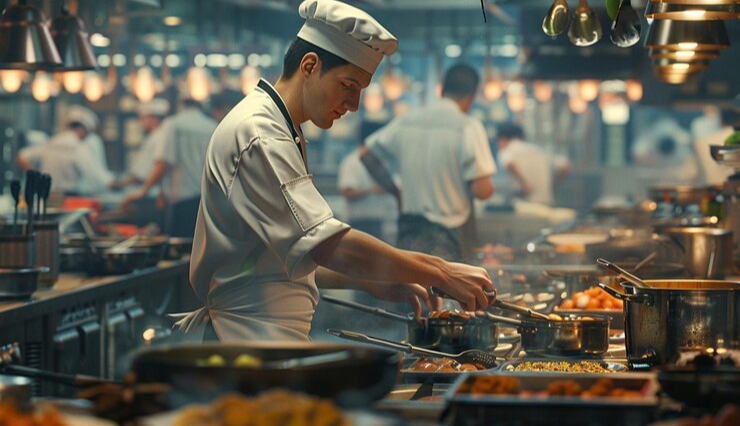
Renowned Chefs
Studying the creations of famous chefs can offer priceless knowledge about the skill of food display. Chefs such as Grant Achatz, Massimo Bottura, Gaggan Anand, Thomas Keller, José Andrés, Heston Blumenthal, and Dominique Crenn are renowned for their impressive ability to showcase food, leveraging their innovation to enhance dining experiences and effectively harness their Chef’s palette and culinary talents. Every chef has created a unique technique, impacting up-and-coming cooks worldwide.
Signature Dishes
Every chef has specific dishes that showcase their skills and creativity. Achatz’s dish “Hot Potato, Cold Potato” challenges dining norms with a multisensory experience through a blend of temperature and texture. Bottura’s plates frequently narrate a tale, while Anand’s colorful inventions mirror his lineage and innovation. Keller’s “Butter Poached Lobster” highlights the elegance of simplicity through its sophisticated display, highlighting the excellence of every single ingredient. Heston Blumenthal’s dish “Sound of the Sea” marries edible components with sound, enveloping guests in a multi-sensory adventure that showcases the chef’s palette and their creative manipulation of flavors.
Tips and Insights
Gaining inspiration from these experts can motivate future chefs. Statements from these famous chefs highlight the significance of passion, creativity, and attention to detail when perfecting the skill of presentation. Their perspectives can help lead others in enhancing the visual attractiveness of their dishes and improving their grasp of the Chef’s palette. For instance, Bottura once expressed that “Cooking is an expression of affection,” emphasizing the importance of the emotional bond between chef and food in making a lasting impression.
Conclusion
To summarize, the Chef’s palette is a vibrant mix of colors, textures, and emotions that result in a visually dazzling culinary experience. Understanding the significance of visual appeal, color psychology, and texture enables chefs to craft dishes that satisfy the palate while also engaging the heart and mind. As diners, recognizing the skill and creativity in a well-presented dish can improve our enjoyment of food and strengthen our relationship with it. Therefore, when you savor a meal again, pause and admire the detailed effort put into each dish, honoring the distinct creativity of the Chef’s palette.
Feel free to contact us to find out more about us and our services, explore who we are, or discuss advertising opportunities. Don’t overlook subscribing to our magazine for monthly updates, exclusive insights, and more exciting content!

